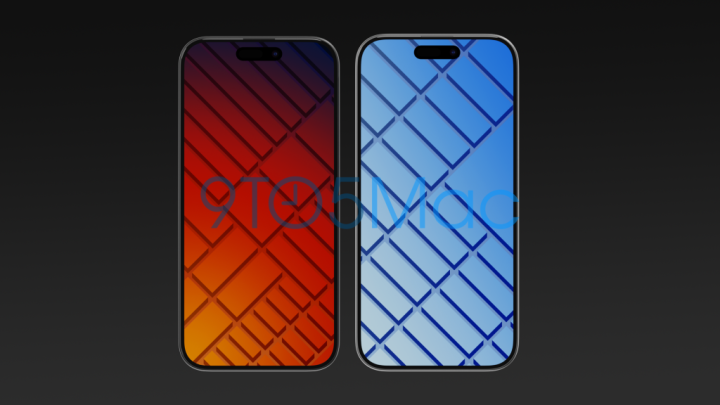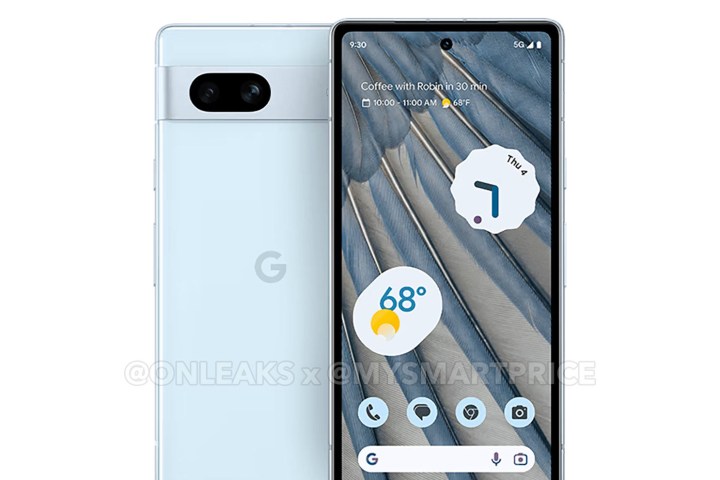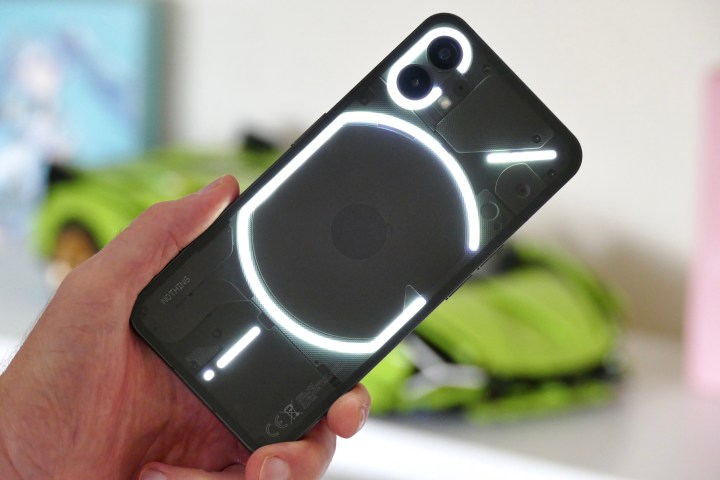Nearly a third of 2023 has already passed, and we’ve already seen a slew of new flagship phones from a variety of manufacturers. So far, we have had the OnePlus 11 and Samsung’s latest flagship Galaxy series, which includes the S23, S23 Plus, and S23 Ultra.
But there’s still more than eight months left in the year, which means plenty of time for the other flagship phones to appear. We’re still expecting a lot in 2023, so let’s take a look at what we’re waiting for.
iPhone 15 and iPhone 15 Pro

We typically expect Apple to release a new iPhone each fall, and this year is no different. We’ll be getting a regular iPhone 15 and an iPhone 15 Pro. Though there will be significant differences between the regular and Pro lineups, they will all have USB-C charging, as well as the Dynamic Island.
Apple should be releasing a larger iPhone 15 Plus as well. This model will be 6.7-inches, compared to 6.1 inches for the regular iPhone, but the displays for both are likely to still be limited to 60Hz refresh rates. This year, Apple may be introducing light pink and light blue colors for the regular iPhone 15 models

Last year, Apple replaced the notch on the iPhone 14 Pro and iPhone 14 Pro Max with the new Dynamic Island. It appears that the Dynamic Island will be standard on all iPhone 15 models, so it will no longer be exclusive to just the Pro models. Hopefully, this also means Apple will be making the Dynamic Island more useful, because it’s still a bit lackluster.
In terms of specs, the iPhone 15 and iPhone 15 Plus will be using the A16 Bionic that is currently in the iPhone 14 Pro line. It will also likely stay at 6GB RAM, but probably use the faster LPDDR5 RAM that is also in the current iPhone 14 Pro models.
There has been a lot of controversy around the mute switch and the volume buttons, but it seems that this may only affect the iPhone 15 Pro models. The iPhone 15 and iPhone 15 Plus may still use the traditional mute switch and two separate volume buttons that have been around for many years. But you should expect the Lightning port to be replaced with USB-C due to EU regulations.

The iPhone 15 Pro devices may turn out to be massive upgrades. Again, they should come in similar sizing to their predecessors at 6.1 and 6.7-inches, and will still have the 120Hz ProMotion adaptive refresh rate displays. The iPhone 15 Pro will also have thinner bezels, but the iPhone 15 Pro Max may be setting new records for the thinnest bezels on a smartphone.
Originally, reports were saying that the iPhone 15 Pro was going to replace the physical buttons with solid-state buttons, but that plan may be scrapped due to unresolved technical issues (adding the three required haptic engines is a complex process). But the design of the buttons may still be different than what we’re used to. Instead of two individual buttons, there may be a single volume rocker, with an indentation in the middle to help users tell the halves apart. The mute switch may also be replaced with a multi-use Action Button instead.

The iPhone 15 Pro devices will be using Apple’s next generation A17 Bionic, and there is a possibility that it will be going from 6GB to 8GB RAM, and may be even getting up to 2TB storage.
Apple may also be further differentiating the iPhone 15 Pro and iPhone 15 Pro Max by having periscope lens technology only in the Pro Max model. With a periscope lens, the iPhone 15 Pro Max could go up to 5x or even 10x optical zoom, which will be a significant improvement. Both models of the iPhone 15 Pro seem to be getting a huge camera bump, due to larger sensors.
Lastly, the iPhone 15 Pro is rumored to come in a deep red color, which would replace the Deep Purple from the iPhone 14 Pro. The other standard colors should remain unchanged.
Google Pixel 8 and Pixel 8 Pro

Google is similar to Apple, in that it is manufacturing its own hardware and in-house chips, while also maintaining a fairly stock Android experience. Google also launches its new line of Pixel phones around the fall, similar to Apple.
The regular Google Pixel 8 looks largely similar in design to its predecessor, with rounded corners, a metallic frame, and a horizontal camera bar with a single pill-shape cutout for the camera sensors. There is a small aesthetic change though, as the earpiece grill seems to be more prominent than the Google Pixel 7. It may also be a tad smaller, which should appease small phone enthusiasts.
The Pixel 8 should use Google’s third-generation Tensor chip, which would be called Tensor G3. It could be made using the 3nm process, which means better performance and power efficiency — the latter being good news because the Pixel 7 was not great in terms of battery life.
We’re expecting a 2268 x 1080 resolution display on the Pixel 8, as well as 12GB RAM, which would be an upgrade over the 8GB from the previous generation. There hasn’t been any word on the camera specs, but on the Pixel 8, there should be at least a main and ultrawide camera.

Like the regular Pixel 8, the Pixel 8 Pro should also look like its predecessor — except it may have a slightly more rounded corner profile and be a tad wider overall. It will also have a dual-tone approach with glass on both sides, and a metal frame that extends into the camera bar frame on the rear. However, the camera layout is changing slightly. Instead of a dual cutout design, it may be a single elongated pill that houses all three camera sensors: main, ultrawide, and telephoto. It also has a fourth sensor under the LED flash, the capabilities of which remain a mystery.
Like the regular Pixel 8, we should have Google’s Tensor G3 chip inside, which means improved performance and battery life thanks to the 3nm process of the chip itself. The Pixel 8 Pro will have higher resolution at 2822 x 1344, and may have 12GB RAM.
Again, the cameras on the Pixel 8 lineup hasn’t leaked yet, but we should expect the usual triple camera array with main, ultrawide, and telephoto sensors.
Google Pixel 7a

Google typically releases a budget version of its current Pixel lineup sometime before the next main flagship releases. In this case, we’ll be getting the Pixel 7a sometime this year.
The design of the Pixel 7a will basically look like the Pixel 7 that is currently out, but with one big difference: much thicker bezels. The front of the phone will be glass, but the back will consist of plastic (this is expected since it is a budget device). It should come in the usual black and white colors, and maybe a third, more colorful blue option as seen above.
On the display, there will be a single hole-punch cutout for the selfie camera, and the back has the camera bar housing a dual-camera system. A fingerprint sensor is also underneath the display, and the phone will have USB-C charging. The Tensor G2 chip that is currently in the Pixel 7 and Pixel 7 Pro should also be found in the Pixel 7a.
The cameras on the Pixel 7a may be getting a worthwhile upgrade, however. Rather than sticking with the aging 12MP main camera, it might get a 64MP Sony IMX787 sensor instead. The ultrawide lens may be 12MP, which should allow for higher-quality photos overall from the main camera.
Google Pixel Fold

Google may also be joining the foldable market this year with the Google Pixel Fold. The leaked design of the Pixel Fold closely resembles that of the current top foldable on the market, the Samsung Galaxy Z Fold 4.
This means a cover display on the outside, and a larger, tablet-like display when unfolded. However, a key difference is that the Pixel Fold may have a wider outer screen, making it look and feel more similar to a normal phone, unlike the Z Fold 4. And when you open it up, it will have a larger screen on the inside when viewed in horizontal landscape orientation. There may be slightly thicker bezels on the inside compared to competitors, but this may not matter considering that it’s a wider display.
Reports suggest that the Pixel Fold may be made out of glass and metal for a premium feel, and those materials also mean that it will be “really heavy,” according to reports. The Pixel Fold will also have a horizontal camera bar island on the back housing three lenses, with the main camera possibly being 64MP.
Google may be putting the current Tensor G2 inside to power the Pixel Fold, and it could have 12GB RAM and at least 256GB of storage. Foldables tend to be more expensive than the normal candybar-style phones we have, but the Pixel Fold may be a tad more affordable at anywhere between $1,300 to $1,500. The Google Pixel Fold may be announced during the Google I/O 2023 conference in May, but it’s still unknown when we can actually buy one.
Samsung Galaxy Z Fold 5

It seems that Samsung is the current mainstream choice when it comes to foldables, and we are expecting the Galaxy Z Fold 5 sometime this year.
While the Galaxy Z Fold 5 will largely look similar to its predecessor, the Galaxy Z Fold 4, there will be some notable changes. The biggest change will be in the new hinge style, which would eliminate the wedge gap between the two halves, helping reduce the creasing problem on the display. Not having the old-style hinge also means that the phone would be slimmer and lay completely flat when folded.
Other concepts of what the Galaxy Z Fold 5 would look like include a change to the rear cameras. Instead of having a raised camera island, it could have free-floating cameras on the back, similar to the S23, S23 Plus, and S23 Ultra.
Of course, Samsung can change the final design, but these concept images may be as close as we can get for now. We should also expect at least a Snapdragon 8 Gen 2 for Galaxy on the Z Fold 5, which is the latest chip in the S23 series.
Samsung Galaxy Z Flip 5

Samsung’s other foldable is a flip-style phone, and we are expecting some big changes to arrive with the Galaxy Z Flip 5.
It should be using the same new waterdrop-style hinge style that the Z Fold 5 would get, which helps reduce the crease in the display — a big problem with foldables right now. The Z Flip 5 is also rumored to have a much larger cover display than the 1.9-inch cover display on the Z Flip 4. With the Z Flip 5, we should expect an external display of around 3.4 inches, and it will take up most of the outer top half, perhaps even enveloping the cameras. This larger cover display would be much more useful than the one on the current model.
Though there have been no specifics on the processor that will appear in the Z Flip 5, but we can guess it might be the Snapdragon 8 Gen 2 for Galaxy, which is used in the S23 lineup. There may be at least 8GB RAM, and it’ll come in three storage capacities like the Z Flip 4: 128GB, 256GB, and 512GB. With the 256GB and higher variants, there may also be faster UFS 4.0 storage speeds.
Though there are going to be a lot of upgrades for the Z Flip 5, the cameras may not be one of them. It’s rumored to still have 12MP main and ultrawide cameras, which is the same as the Z Flip 4. But there may be larger sensors at least, which would help with capturing more light in photos.
OnePlus folding phone

OnePlus has confirmed that it will be releasing its first foldable phone sometime in 2023. However, there haven’t been any leaks about what it may look like or what specs it will have.
There is some speculation that the OnePlus foldable phone is just going to be a rebadged Oppo Find N2, which is a device that is only available in China. While this may sound like a lazy move, it actually makes sense, considering that OnePlus has taken inspiration from Oppo before. In fact, both brands’ supply chains are working together, and their Android skins have technically merged.
The Oppo Find N2 isn’t a bad phone, either. It’s reasonably priced for a foldable, the size is more manageable than the Galaxy Z Fold’s, and it handles the creasing issue much better. We’ll be eager to see what OnePlus’ foldable will look like, but for now, it remains a mystery.
Motorola Razr 2023

Motorola is set to release another Razr foldable this year, appropriately named the Razr 2023. There hasn’t been a lot of news around it other than it’s coming, but we have seen a concept floating around in the past few months that makes us swoon.
The Razr is a flip-style foldable phone, similar to the Samsung Galaxy Z Flip. From what we’ve seen in the renders so far, it looks like the Razr 2023 will have a large cover screen, which will be useful considering that previous Razr models have let you run whatever app you want on the outer display.
Other changes in the design include a more round body than previous models and a dual rear camera system. But when will we see it drop? That’s anyone’s guess at this point, but it’s definitely sometime this year.
Nothing Phone 2

The Nothing Phone is one of the most unique phones on the market because of it’s unique design. It features a light-up glyph on the back and a semitransparent casing. We don’t have any leaks on what the Nothing Phone 2 is going to look like, but there are some fan-made concepts out there that look outstanding.
And though we expect a lot of flagship phones to use the newest Snapdragon 8 Gen 2 chip this year, Nothing may be an exception. Though it hasn’t confirmed exactly what chip will be used in the Nothing Phone 2, Nothing said it will be using a flagship Qualcomm chip, so something in the Snapdragon 8 series. If Nothing was going to use the newest Gen 2, you’d think it would come out and say so, but since the Nothing Phone is more of a budget flagship, it’s highly possible it may just use last year’s Snapdragon 8+ Gen 1.
The first Nothing Phone came out in July 2022, so we expect a similar time frame for the Nothing Phone 2. This would also be the first Nothing Phone to be released in the U.S., as confirmed by founder Carl Pei himself. The first Nothing Phone also cost under $500, so the Nothing Phone 2 should be somewhere in that price range too.

